Making slime is a popular and fun activity for kids that combines creativity and science. With just a few simple ingredients found at home, you can create your own homemade slime. In this easy step-by-step guide, I will walk you through the process of making slime.
2. To make slime, you will need PVA white glue, baking soda, food coloring, and eye contact solution. These ingredients can easily be found in your kitchen or at a local store. Optional baby oil can also be used to prevent stickiness.
3. Start by combining the PVA white glue, baking soda, and a few drops of food coloring in a glass bowl. Mix them together until they are well blended.
4. Gradually add the eye contact solution to the mixture while stirring continuously. Keep adding the solution until the slime starts to form and becomes less sticky. If desired, you can add a small amount of baby oil to further reduce stickiness.
5. Slime can also be used as an educational tool in the classroom. Teachers can incorporate slime-making into activities such as procedural writing, where students write step-by-step instructions on how to make slime. It can also be used to teach students about comparing different slime textures or understanding non-standard informational texts.
6. For a different variation, you can try a slime recipe using contact lens saline solution and glitter glue. Mix together the glitter glue, baking soda, and saline solution until the slime reaches the desired consistency. This recipe allows for sensory stimulation, as you can add different colors and shapes to the slime.
7. Alternatively, if you prefer a simpler slime recipe, you can use glitter glue and contact solution. Mix the glitter glue, baking soda, and contact solution together until the slime forms. This is a quick and easy way to make slime without any complicated ingredients.
8. When you’ve finished making slime, remember to store it properly to keep it fresh for future use. Store the slime in an airtight container to prevent it from drying out.
Key Takeaways:
- Making slime is a popular and fun activity for kids.
- It can be made using simple ingredients like PVA white glue, baking soda, and eye contact solution.
- Slime-making can be used as an educational tool in the classroom.
- Alternative slime recipes include using glitter glue and contact solution or contact lens saline solution and glitter glue.
- Store your homemade slime in an airtight container to keep it fresh.
What You’ll Need for Making Slime
3. Making slime is a popular activity for kids that can also be a science lesson. A simple and easy slime recipe involves mixing PVA white glue with baking soda, food coloring, and eye contact solution. The ingredients are mixed together in a glass bowl and baby oil can be added to prevent stickiness.
4. Here’s a breakdown of the slime ingredients:
| Ingredients | Quantity |
|---|---|
| PVA white glue | 1 cup |
| Baking soda | 1/2 teaspoon |
| Food coloring | A few drops |
| Eye contact solution | 2-3 tablespoons |
| Baby oil (optional) | A small amount |
5. Slime can be used in the classroom for various activities. Teachers can incorporate slime-making as an engaging activity for procedural writing, where students write step-by-step instructions on how to make slime. It can also be used to teach concepts like comparing different slime textures or understanding non-standard informational texts.
Making Slime in the Classroom
6. Another recommended slime recipe involves using contact lens saline solution and glitter glue for a more sensory-stimulating experience. To make this slime, mix the glitter glue, baking soda, and saline solution until a slime consistency is achieved. You can add different colors and shapes to make it visually appealing and exciting for kids.
7. If you prefer a simpler slime recipe, you can use glitter glue and contact solution. Just mix the glitter glue, baking soda, and contact solution together until the slime forms. It’s a quick and easy way to make slime without any complicated ingredients.
8. Once you’ve made your slime, it’s important to store it properly for future use. Keep your slime in an airtight container to prevent it from drying out. This way, you can enjoy your homemade slime for weeks to come.
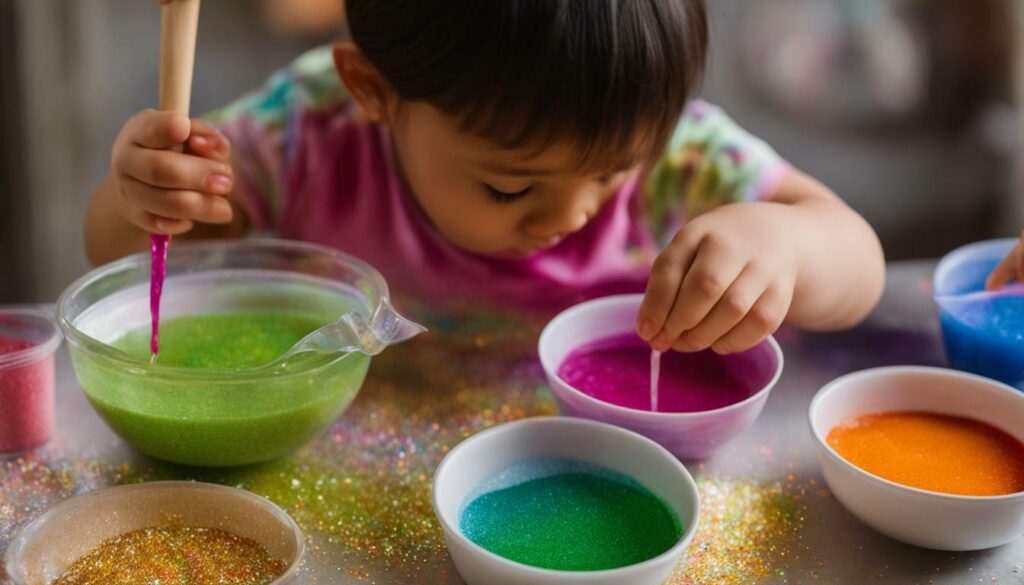

Summary
Making slime is a fun and educational activity that can be enjoyed by kids of all ages. By following a simple slime recipe using common household items, you can create your own slime in no time. Whether you choose to make slime with PVA glue, glitter glue, or contact solution, the possibilities are endless. Slime can also be used as a teaching tool in the classroom, allowing students to practice procedural writing and comprehend non-standard informational texts. So gather your materials and let the slime-making adventure begin!
Mixing the Slime Ingredients
Now that we have gathered all the necessary ingredients, let’s start mixing them together to create our slime. First, grab a glass bowl and add the PVA white glue, about ½ cup should be enough for a good-sized batch of slime.
Next, sprinkle in a teaspoon of baking soda. This will help give our slime a nice and stretchy texture. If you want to add some color to your slime, now is the time to drop in a few drops of your favorite food coloring. Mix everything together in the bowl until the color is evenly distributed throughout the glue and baking soda mixture.
Now comes the secret ingredient that will turn our mixture into slime – the eye contact solution. Start by adding a tablespoon of the solution to the bowl and give it a good stir. You should notice the slime starting to form. Keep adding the solution gradually, stirring as you go, until the slime is no longer sticky and is easy to handle.
For an extra touch, you can add a small amount of baby oil to the slime to make it less sticky. This will also give it a nice shine. Just remember not to add too much, as it can make the slime too slippery to play with. And that’s it! Your slime is ready to be played with and enjoyed!
Slime Making Tips
- Make sure to use PVA white glue for the best results.
- If your slime is too sticky, add a little more eye contact solution.
- Experiment with different colors and textures by adding glitter, foam beads, or sequins.
- Clean up any spills or leftover slime with warm soapy water.
| Ingredients | Amount |
|---|---|
| PVA white glue | ½ cup |
| Baking soda | 1 teaspoon |
| Food coloring | A few drops |
| Eye contact solution | 1-2 tablespoons |
| Baby oil (optional) | A small amount |
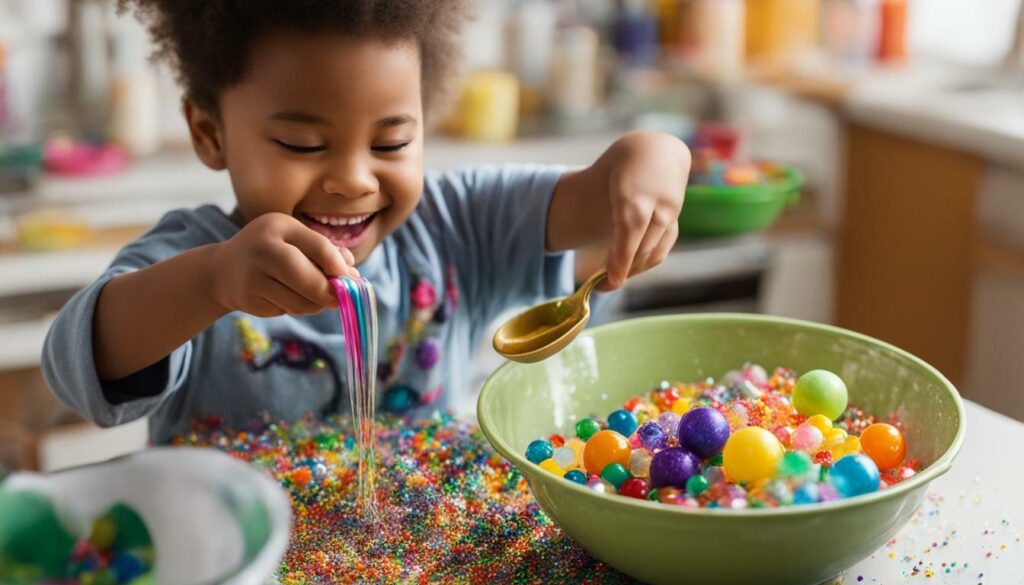

Get ready to have hours of fun and sensory stimulation with your homemade slime. Remember to store it in an airtight container to keep it fresh for future use. Enjoy!
Using Slime in the Classroom
Slime is not only a fun activity for kids, but it can also be a valuable tool in the classroom. As a teacher, I have found that slime-making can be used for various educational purposes, making it a versatile and engaging learning tool.
One of the ways slime can be used in the classroom is for procedural writing. By having students write step-by-step instructions on how to make slime, they not only practice their writing skills but also learn the importance of clear and concise instructions. This activity can be tailored to different grade levels, making it suitable for both younger and older students.
Slime can also be used to teach students about non-standard informational texts. By comparing different slime textures and discussing their properties, students can develop their comprehension skills and learn to analyze and interpret information in a non-traditional format. This activity encourages critical thinking and stimulates curiosity.
Furthermore, slime can be used as a tool for making comparisons. Students can explore different slime recipes, experiment with variations in ingredients, and observe the changes in slime texture and consistency. This hands-on approach allows students to practice their scientific inquiry skills while also encouraging creativity and problem-solving.
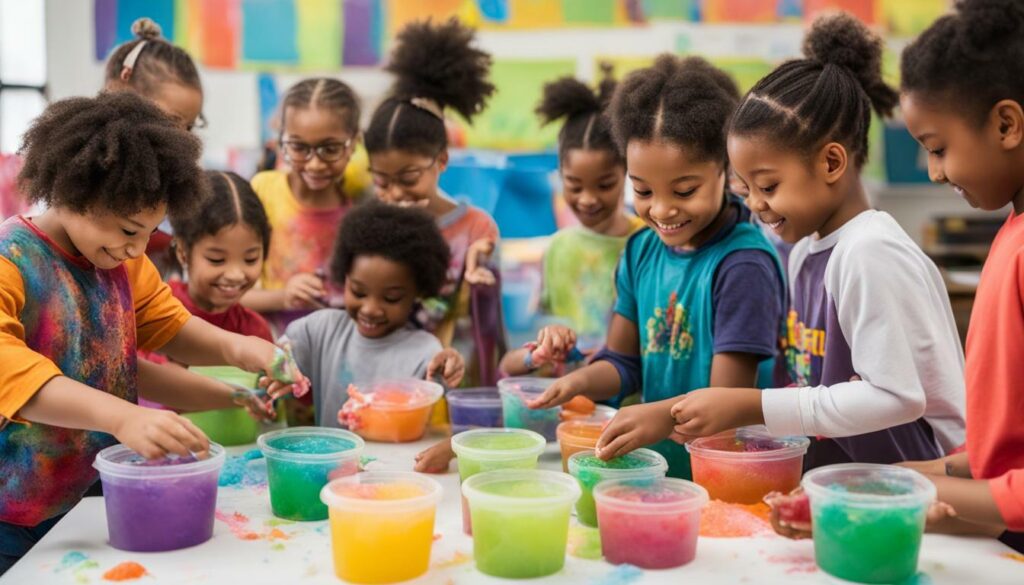

Table 1: Comparing Different Slime Textures
| Slime Recipe | Texture | Consistency |
|---|---|---|
| Recipe 1: Glitter Glue + Baking Soda + Contact Solution | Stretchy | Smooth |
| Recipe 2: Clear Glue + Liquid Starch | Gooey | Slippery |
| Recipe 3: Shaving Cream + Glue + Saline Solution | Fluffy | Light |
“Slime-making is a hands-on activity that appeals to different learning styles and fosters creativity and critical thinking skills.” – Excerpt from a teacher’s testimonial
Slime Recipe with Contact Lens Saline Solution and Glitter Glue
If you’re looking for a slime recipe that offers both visual appeal and sensory stimulation, the contact lens saline solution and glitter glue method is the perfect choice. This recipe allows you to create a vibrant and sparkly slime that kids will love to play with.
To make this slime, you will need the following ingredients:
| Ingredients | Quantity |
|---|---|
| Glitter glue | 1 bottle |
| Baking soda | 1/2 teaspoon |
| Contact lens saline solution | 1-2 tablespoons |
To begin, empty the entire bottle of glitter glue into a mixing bowl. Next, add the baking soda and mix well. Gradually pour in the contact lens saline solution while stirring continuously. Keep adding the solution until the slime starts to form and becomes less sticky.
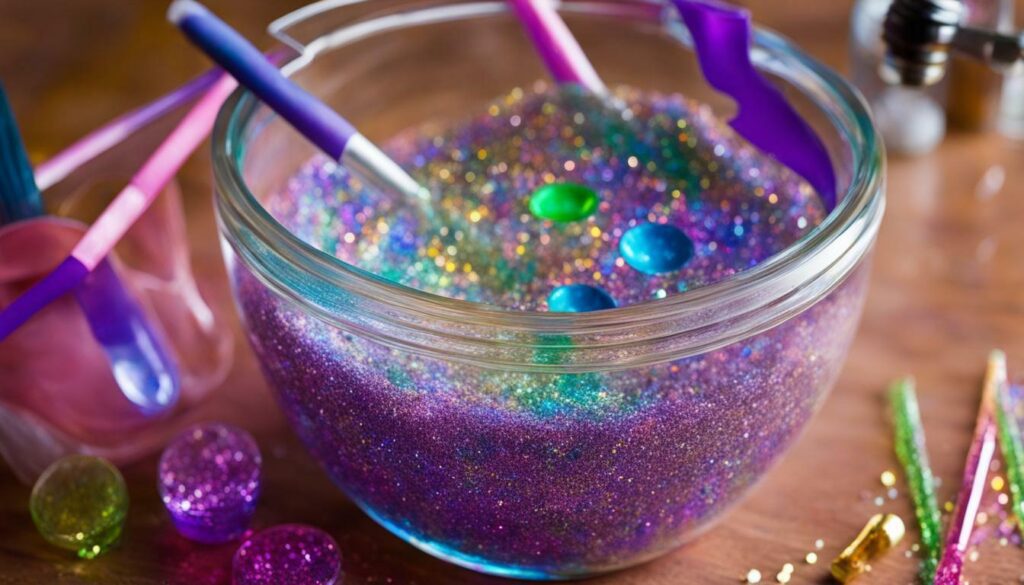

This recipe allows for endless creativity by incorporating different colors and shapes of glitter glue. You can experiment with various combinations to create unique slime each time. The glittery texture adds a touch of magic and makes it even more enticing for sensory play.
Remember to store your slime in an airtight container to keep it fresh and ready for future play. With this slime recipe, you’ll have hours of fun and sensory exploration at your fingertips.
Easy Slime Recipe with Glitter Glue and Contact Solution
Making slime is a popular activity for kids that can also be a science lesson. A simple and easy slime recipe involves mixing PVA white glue with baking soda, food coloring, and eye contact solution. The ingredients are mixed together in a glass bowl, and if desired, a small amount of baby oil can be added to prevent stickiness.
Slime can be used in the classroom for various activities. Teachers can incorporate slime-making into procedural writing, where students write step-by-step instructions on how to make slime. It can also be used to teach concepts like comparing different slime textures or understanding non-standard informational texts. Slime provides a hands-on learning experience that engages students and encourages their creativity.
For a different slime recipe that offers sensory stimulation, I recommend using contact lens saline solution and glitter glue. This recipe involves mixing glitter glue, baking soda, and saline solution together until the slime forms. The glitter adds sparkle to the slime, and different colors or shapes can be added for extra visual appeal.
Easy Slime Recipe with Glitter Glue and Contact Solution:
- Gather the following ingredients:
- 1 bottle of glitter glue
- 1/2 teaspoon of baking soda
- 1 tablespoon of contact lens saline solution
- In a glass bowl, pour the glitter glue and add the baking soda.
- Slowly add the contact lens saline solution and mix well until the slime starts to form.
- Knead the slime with your hands until it reaches the desired consistency.
- Enjoy playing with your glittery slime!
Remember to store the slime in an airtight container to keep it fresh for future play. Slime-making is a fun and creative activity that can be enjoyed by kids of all ages. So, grab your glitter glue and contact solution, and let’s get sliming!
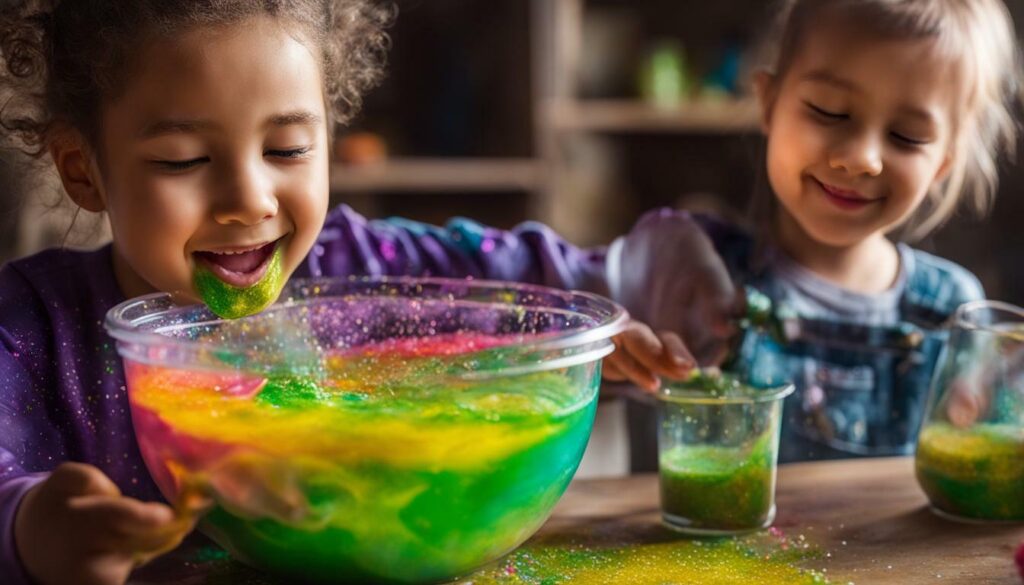

Storing Slime for Later Use
When it comes to storing homemade slime, proper storage is essential to ensure its longevity and prevent it from drying out. Here are some tips on how to store your slime for future use:
- Choose an airtight container: Transfer your slime into a clean, airtight container. Mason jars or plastic containers with tight-fitting lids work well for this purpose.
- Avoid exposure to air: Make sure the container is sealed tightly to prevent air from entering. Air exposure can cause the slime to dry out and lose its stretchy texture.
- Keep it in a cool, dry place: Store your slime in a cool area away from direct sunlight and excessive heat. Heat can cause the slime to become sticky or melt.
- Label the container: To avoid confusion, label the container with the date of creation and type of slime. This will help you keep track of the slime’s freshness and prevent mixing different types together.
By following these storage guidelines, you can enjoy your homemade slime for weeks or even months to come. Remember to check the slime for any signs of mold or deterioration before using it again. If the slime becomes dry or loses its stretch, you can revive it by adding a few drops of water or contact solution and kneading it until the desired consistency is achieved.
With proper storage, you can have your homemade slime ready for playtime whenever you or your kids feel like having some squishy fun!
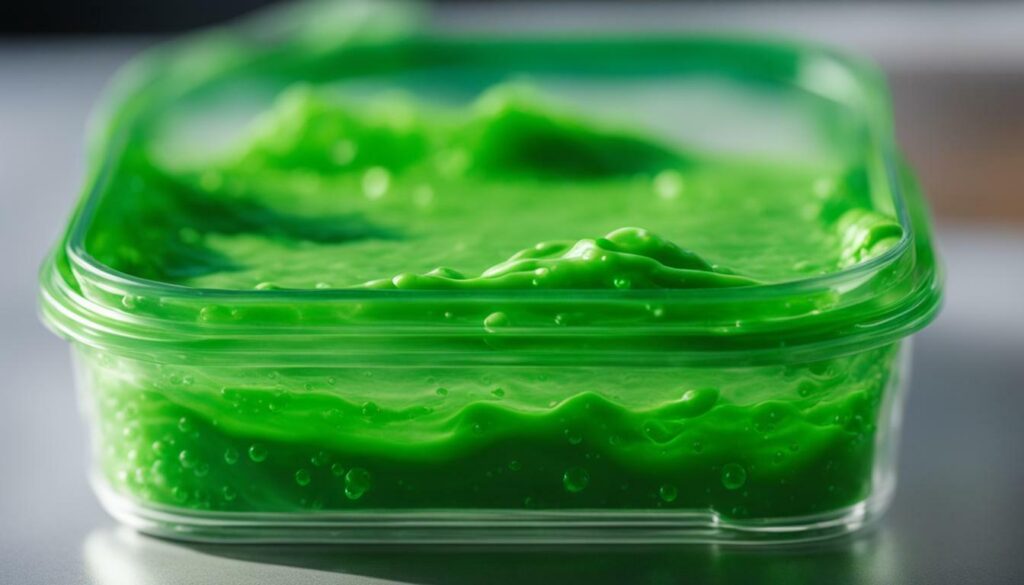

| Type of Slime | Main Ingredients | Additional Ingredients |
|---|---|---|
| Basic Slime | PVA white glue, baking soda, eye contact solution | Food coloring, baby oil (optional) |
| Glitter Slime | Glitter glue, baking soda, contact lens saline solution | None |
| Sensory Slime | PVA white glue, baking soda, eye contact solution | Glitter, sequins, beads, etc. |
Conclusion
Making slime is a popular activity for kids that provides endless fun and creativity. With just a few simple ingredients found at home, you can easily create your own DIY slime.
The basic slime recipe involves mixing PVA white glue with baking soda, food coloring, and eye contact solution. These ingredients are easily available and can be combined in a glass bowl. To prevent stickiness, you can also add a small amount of baby oil.
Not only is making slime a fun activity, but it can also be a great learning tool in the classroom. Teachers can use slime-making to teach procedural writing, help students understand non-standard informational texts, and encourage making comparisons between different slime textures.
If you’re looking to add a little extra sparkle to your slime, try the recipe using contact lens saline solution and glitter glue. This recipe allows for sensory stimulation as you can add different colors and shapes to the slime. Alternatively, you can opt for a simpler recipe using glitter glue and contact solution, which is quick and easy to make.
Remember to store your slime in an airtight container to keep it fresh and enjoy its squishy goodness for weeks to come. Happy slime-making!
